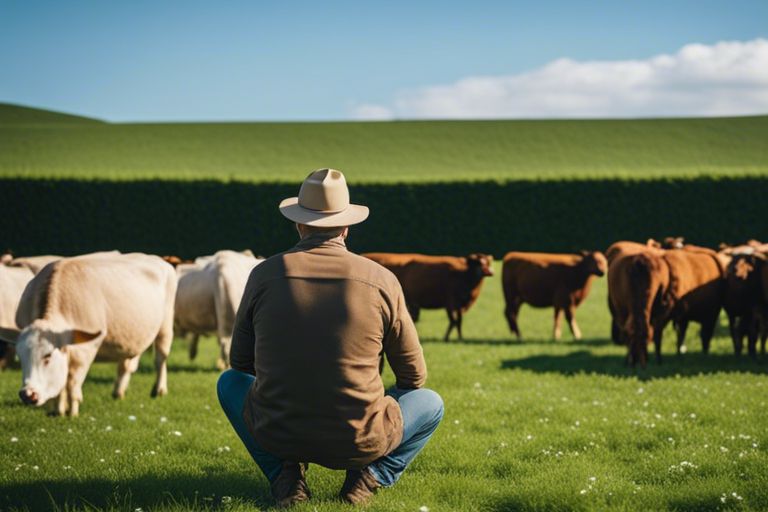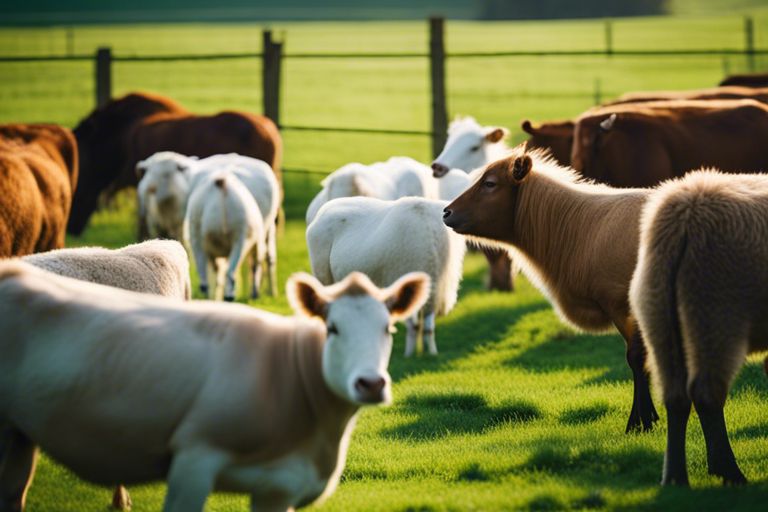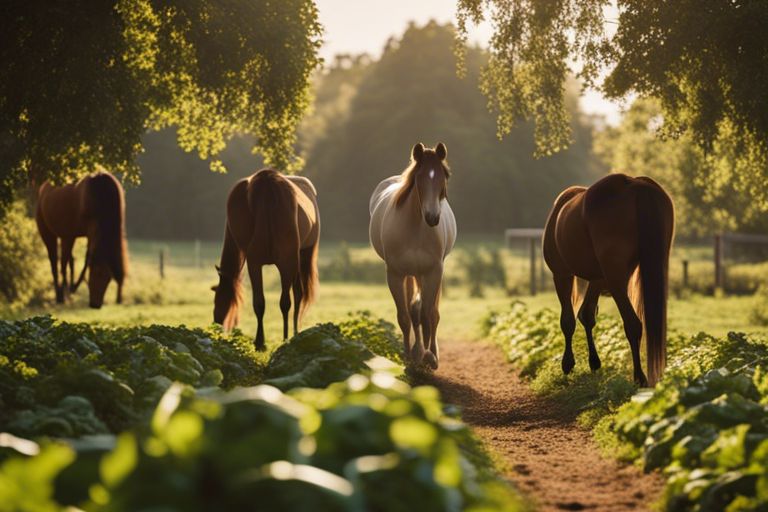It is important for livestock owners to implement proper grazing management techniques in order to ensure the health and well-being of their animals. By carefully planning and monitoring grazing practices, farmers can promote optimal nutrition, prevent overgrazing, and improve pasture quality. In this blog post, we will discuss the importance of proper grazing management and provide tips for achieving success in this aspect of livestock husbandry.
Fundamentals of Grazing Management
Understanding Grazing Systems
With proper grazing management, you can ensure your livestock has access to high-quality forage while maintaining the health of your pastures. Understanding grazing systems is imperative to optimize your livestock’s nutrition and overall well-being. By rotating pastures, resting grasslands, and implementing stocking rates that match forage availability, you can improve grassland health and increase productivity.
Principles of Forage Growth
On any livestock operation, understanding the principles of forage growth is crucial for sustainable grazing management. Forage growth is influenced by factors such as temperature, moisture, sunlight, and soil fertility. By aligning grazing practices with the growth patterns of forage species, you can maximize your pasture’s productivity and longevity. Monitoring forage growth stages and adjusting grazing strategies accordingly will help maintain healthy pasture ecosystems.
Principles
Principles of forage growth dictate that grasses and legumes have different growth patterns and nutrient profiles throughout the year. It is important to consider these factors when planning your grazing management strategy. By rotating pastures to allow forage to rest and regrow, you can ensure your livestock always has access to high-quality forage, leading to improved animal health and performance.
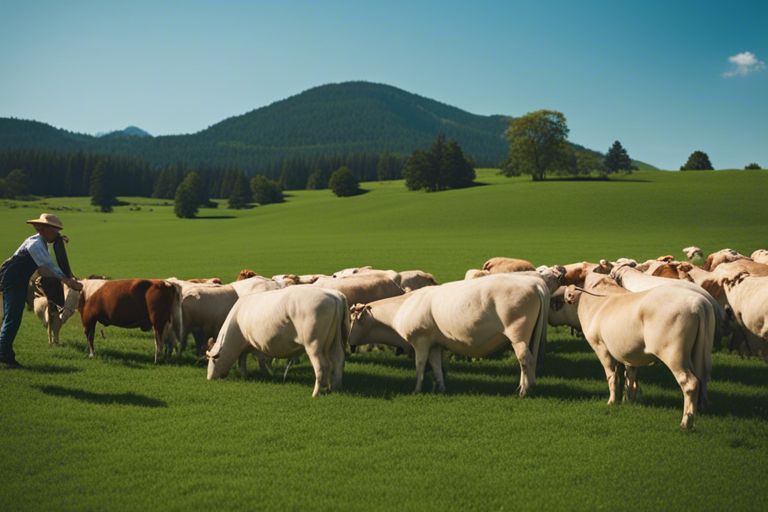
Implementing a Grazing Plan
Assessing Forage Availability
One of the crucial steps in implementing a grazing plan is assessing the available forage in your pasture. This involves understanding the type of forage present, its nutritional content, and the overall quantity. By conducting a thorough assessment, you can determine the carrying capacity of your pasture and make informed decisions about stocking rates and grazing strategies.
Planning for Seasonal Variations
Implementing a grazing plan that accounts for seasonal variations is necessary for maintaining healthy livestock year-round. This involves developing strategies to manage forage availability during times of abundance and scarcity. By planning ahead for seasonal changes, such as fluctuating temperatures and precipitation, you can ensure that your livestock have access to adequate nutrition at all times.
Assessing the impact of seasonal variations on forage growth and quality is key to developing a successful grazing plan. By monitoring changes in forage availability throughout the year, you can adjust your grazing strategies accordingly and prevent overgrazing or underutilization of pasture resources. Consider factors such as weather patterns, soil conditions, and plant growth cycles to optimize your grazing management practices.
Livestock Health and Grazing
Nutritional Needs and Pasture Quality
On a fundamental level, proper grazing management is crucial for maintaining the health of your livestock. Nutritional needs vary depending on the type of livestock and their stage of growth. It is crucial to understand the quality of the pasture they are grazing on, as it directly impacts their well-being. High-quality pastures provide a balanced diet, ensuring that your livestock receive the necessary nutrients for optimal health.
Monitoring Livestock and Pasture Condition
An integral part of proper grazing management is the regular monitoring of both your livestock and pasture condition. By closely observing your animals, you can identify any signs of illness or nutritional deficiencies early on and take appropriate action. Additionally, monitoring pasture condition allows you to assess its quality and make necessary adjustments to ensure your livestock have access to nutritious forage.
It is important to establish a routine for monitoring livestock and pasture condition, including regular visual inspections and keeping detailed records. This proactive approach can help prevent health issues in your livestock and maintain the overall productivity of your pastures.

Advanced Grazing Practices
- Rotational Grazing Techniques
Any successful livestock operation can benefit from incorporating rotational grazing techniques. This strategy involves dividing pastures into smaller sections and rotating livestock between them at regular intervals. This allows for rest and regrowth of forage, preventing overgrazing and promoting healthier pastures.
- Sustainable Grazing and Land Stewardship
To ensure the long-term health of both livestock and the land, sustainable grazing practices and land stewardship are crucial. Sustainable grazing involves managing pastures in a way that maintains or improves soil health, water quality, and biodiversity. By implementing holistic management practices, farmers can preserve the fertility of their land for future generations.
Sustainable Grazing and Land Stewardship
Sustainable grazing practices not only benefit livestock but also help to protect the environment. By following sustainable grazing techniques, farmers can reduce soil erosion, improve water retention, and enhance biodiversity on their land. By taking a proactive approach to land stewardship, farmers can ensure their operations remain viable and productive for years to come.
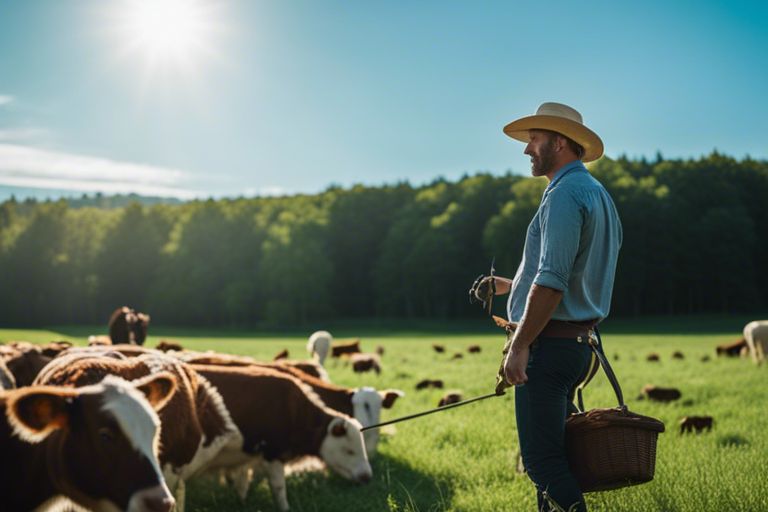
Challenges and Solutions in Grazing Management
Drought Management Strategies
On occasion, livestock farmers face the challenge of managing grazing lands during droughts. It is crucial to have strategies in place to protect the health and well-being of the livestock during these periods of limited forage availability.
Dealing with Overgrazing Effects
An effective grazing management plan must address the adverse effects of overgrazing on pastures and livestock health. Overgrazing can lead to decreased forage production, soil erosion, and deterioration of pasture quality. Implementing proper rotational grazing and rest periods for pastures can help mitigate these effects.
Effects
Overgrazing not only impacts the productivity of pastures but also the overall health of livestock. Reduced forage availability can lead to inadequate nutrition for the animals, resulting in weight loss, decreased reproduction rates, and overall poor livestock performance. It is vital for farmers to closely monitor and manage grazing practices to prevent overgrazing and maintain healthy livestock.
Conclusion
As a reminder, proper grazing management is important for maintaining healthy livestock. By implementing rotational grazing, monitoring forage quality, providing clean water sources, and practicing strategic supplementation, farmers can ensure their animals have access to the nutrients they need to thrive. This proactive approach not only benefits the livestock’s health and well-being but also contributes to sustainable land management practices. Be mindful of, healthy livestock are key to a successful farming operation.
FAQ
Q: What is proper grazing management?
A: Proper grazing management refers to the strategic planning and execution of grazing practices to ensure the health and productivity of livestock and the sustainability of the land.
Q: Why is proper grazing management important for livestock?
A: Proper grazing management is important for livestock because it ensures they have access to high-quality forage, reduces the risk of overgrazing, minimizes the spread of parasites and diseases, and promotes overall animal health and well-being.
Q: What are the benefits of proper grazing management for the land?
A: Proper grazing management can improve soil health, increase organic matter content, enhance water infiltration and retention, reduce erosion, and promote the growth of diverse plant species.
Q: How can I implement proper grazing management practices?
A: Implement proper grazing management practices by creating a rotational grazing system, monitoring forage quality and quantity, providing adequate rest periods for pastures, and implementing cross-fencing to divide pastures into smaller paddocks.
Q: What is a rotational grazing system?
A: A rotational grazing system involves dividing pastures into smaller paddocks and rotating livestock between them to allow forage to rest and regrow. This helps prevent overgrazing and ensures more efficient use of available resources.
Q: How does proper grazing management impact livestock health?
A: Proper grazing management can improve livestock health by ensuring they have access to a balanced diet, reducing the risk of nutrient deficiencies, minimizing exposure to parasites and pathogens, and providing a clean and sanitary environment.
Q: What are some common mistakes to avoid in grazing management?
A: Common mistakes to avoid in grazing management include overgrazing, underestimating forage availability, neglecting pasture rotation, failing to provide adequate water sources, and not monitoring livestock behavior and pasture conditions regularly.
